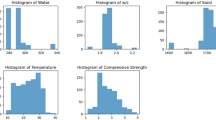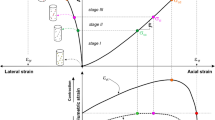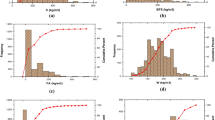Abstract
The prediction of compressive strength in concrete plays a crucial role in the construction industry, as it helps ensure the structural integrity of buildings and infrastructure. This study examines the utilization of fly ash and admixture combinations as input factors for predicting compressive strength using four machine learning algorithms: random forest (RF), support vector machine (SVM), artificial neural network (ANN), and XGBoost, which are utilized and evaluated based on a dataset that is divided into 70% for training and 30% for testing. The performance of each model is assessed by using performance indicators such as mean absolute error, mean squared error, and R-squared. Among all machine learning models, the most effective algorithm for predicting the compressive strength of concrete is XGBoost, which performs better than the other models with an R-squared value of 0.9965 and an RMSE value of 0.9605. Its outstanding performance was aided by its capacity for handling complex relationships between input variables, feature selection abilities, and strong regularization strategies. In terms of accuracy and predictive power, XGBoost exceeded RF, SVM, and ANN, making it a viable technique for predicting concrete's compressive strength. This work advances predictive modelling in concrete engineering, enabling a more accurate compressive strength forecast and eventually enhancing the performance and durability of concrete buildings.










Similar content being viewed by others
References
Abdalqader, A. F., Jin, F., & Al-Tabbaa, A. (2016). Development of greener alkali-activated cement: utilisation of sodium carbonate for activating slag and fly ash mixtures. Journal of Cleaner Production, 113, 66–75. https://doi.org/10.1016/j.jclepro.2015.12.010
Ahmed, S., Khan, M., & Azad, A. K. (2019). Predicting compressive strength of concrete using machine learning techniques. Construction and Building Materials, 211, 545–556.
Choudhary, R., Gupta, R., Alomayri, T., Jain, A., & Nagar, R. (2021). Permeation, corrosion, and drying shrinkage assessment of self-compacting high strength concrete comprising waste marble slurry and fly ash, with silica fume. In: Structures (vol. 33, pp. 971–985). Elsevier. https://doi.org/10.1016/j.istruc.2021.05.008
Curpen, S., Teutsch, N., Kovler, K., & Spatari, S. (2023). Evaluating life cycle environmental impacts of coal fly ash utilization in embankment versus sand and landfilling. Journal of Cleaner Production, 385, 135402. https://doi.org/10.1016/j.jclepro.2022.135402
Dinakar, P., Reddy, M. K., & Sharma, M. (2013). Behaviour of self compacting concrete using Portland pozzolana cement with different levels of fly ash. Materials & Design, 46, 609–616. https://doi.org/10.1016/j.matdes.2012.11.015
Feng, D.-C., Liu, Z.-T., Wang, X.-D., Chen, Y., Chang, J.-Q., Wei, D.-F., & Jiang, Z.-M. (2020). Machine learning-based compressive strength prediction for concrete: An adaptive boosting approach. Construction and Building Materials, 230, 117000. https://doi.org/10.1016/j.conbuildmat.2019.117000
Hossain, M. U., Dong, Y., & Ng, S. T. (2021). Influence of supplementary cementitious materials in sustainability performance of concrete industry: A case study in Hong Kong. Case Studies in Construction Materials, 15, e00659. https://doi.org/10.1016/J.CSCM.2021.E00659
Hossain, Md. U., Poon, C. S., Dong, Y. H., & Xuan, D. (2018). Evaluation of environmental impact distribution methods for supplementary cementitious materials. Renewable and Sustainable Energy Reviews, 82, 597–608. https://doi.org/10.1016/j.rser.2017.09.048
Jiao, D., Shi, C., Yuan, Q., An, X., Liu, Y., & Li, H. (2017). Effect of constituents on rheological properties of fresh concrete-A review. Cement and Concrete Composites, 83, 146–159. https://doi.org/10.1016/j.cemconcomp.2017.07.016
Kaveh, A., & Khavaninzadeh, N. (2023, June). Efficient training of two ANNs using four meta-heuristic algorithms for predicting the FRP strength. In Structures (vol. 52, pp. 256–272). Elsevier.
Kaveh, A., Dadras Eslamlou, A., Javadi, S. M., & Geran Malek, N. (2021). Machine learning regression approaches for predicting the ultimate buckling load of variable-stiffness composite cylinders. Acta Mechanica, 232, 921–931.
Khaloo, A. R., Dehestani, M., & Rahmatabadi, P. (2008). Mechanical properties of concrete containing a high volume of tire–rubber particles. Waste Management, 28(12), 2472–2482. https://doi.org/10.1016/J.WASMAN.2008.01.015
Khan, F. A., et al. (2020). Predicting the compressive strength of recycled aggregate concrete using machine learning. Construction and Building Materials, 239, 117859.
Khankhaje, E., Kim, T., Jang, H., Kim, C. S., Kim, J., & Rafieizonooz, M. (2023). Properties of pervious concrete incorporating fly ash as partial replacement of cement: A review. Developments in the Built Environment, 14, 100130. https://doi.org/10.1016/J.DIBE.2023.100130
Kumar, A., Jain, S., & Kumar, P. (2021). Predicting the compressive strength of concrete with different admixtures using machine learning models. Journal of Building Engineering, 37, 102015.
Li, M., Hao, H., Shi, Y., & Hao, Y. (2018). Specimen shape and size effects on the concrete compressive strength under static and dynamic tests. Construction and Building Materials, 161, 84–93. https://doi.org/10.1016/j.conbuildmat.2017.11.069
Li, Y., Liu, Y., Gong, X., Nie, Z., Cui, S., Wang, Z., & Chen, W. (2016). Environmental impact analysis of blast furnace slag applied to ordinary Portland cement production. Journal of Cleaner Production, 120, 221–230. https://doi.org/10.1016/j.jclepro.2015.12.071
Liu, G., Yang, H., Fu, Y., Mao, C., Xu, P., Hong, J., & Li, R. (2020). Cyber-physical system-based real-time monitoring and visualization of greenhouse gas emissions of prefabricated construction. Journal of Cleaner Production, 246, 119059. https://doi.org/10.1016/J.JCLEPRO.2019.119059
Mai, H. V. T., Nguyen, T. A., Ly, H. B., & Tran, V. Q. (2021). Prediction compressive strength of concrete containing GGBFS using random forest model. Advances in Civil Engineering, 2021, 1–12. https://doi.org/10.1155/2021/6671448
McCarthy, M. J., & Dyer, T. D. (2019). Pozzolanas and pozzolanic materials. Lea’s Chemistry of Cement and Concrete, 5, 363–467.
Mohamad, N., Muthusamy, K., Embong, R., Kusbiantoro, A., & Hashim, M. H. (2022). Environmental impact of cement production and Solutions: A review. Materials Today: Proceedings, 48, 741–746. https://doi.org/10.1016/j.matpr.2021.02.212
Moradi, M. J., Khaleghi, M., Salimi, J., Farhangi, V., & Ramezanianpour, A. M. (2021). Predicting the compressive strength of concrete containing metakaolin with different properties using ANN. Measurement, 183, 109790. https://doi.org/10.1016/J.MEASUREMENT.2021.109790
Murthy, S. S., Khambekar, R. R., & Gupta, A. P. (2020). Prediction of compressive strength of concrete with admixtures using machine learning models. International Journal of Concrete Structures and Materials
Nayak, D. K., Abhilash, P. P., Singh, R., Kumar, R., & Kumar, V. (2022). Fly ash for sustainable construction: A review of fly ash concrete and its beneficial use case studies. Cleaner Materials, 6, 100143. https://doi.org/10.1016/j.clema.2022.100143
Ondova, M., Stevulova, N., & Estokova, A. (2012). The study of the properties of fly ash based concrete composites with various chemical admixtures. Procedia Engineering, 42, 1863–1872. https://doi.org/10.1016/J.PROENG.2012.07.582
Rajabipour, F., et al. (2021). Machine learning for concrete performance prediction: A review. Cement and Concrete Research, 140, 106304.
Rashid, M. A., & Mansur, M. A. (2009). Considerations in producing high-strength concrete. Journal of Civil Engineering (IEB), 37(1), 53–63.
Ren, X., & Sancaktar, E. (2019). Use of fly ash as eco-friendly filler in synthetic rubber for tire applications. Journal of Cleaner Production, 206, 374–382. https://doi.org/10.1016/J.JCLEPRO.2018.09.202
Rofooei, F. R., Kaveh, A., & Farahani, F. M. (2011). Estimating the vulnerability of the concrete moment resisting frame structures using artificial neural networks. Int J Optim Civil Eng, 1(3), 433–448.
Scrivener, K. L., & Kirkpatrick, R. J. (2008). Innovation in use and research on cementitious material. Cement and Concrete Research, 38(2), 128–136. https://doi.org/10.1016/j.cemconres.2007.09.025
Singh, R. P., Vanapalli, K. R., Cheela, V. R. S., Peddireddy, S. R., Sharma, H. B., & Mohanty, B. (2023). Fly ash, GGBS, and silica fume based geopolymer concrete with recycled aggregates: Properties and environmental impacts. Construction and Building Materials, 378, 131168. https://doi.org/10.1016/j.conbuildmat.2023.131168
Song, H., Ahmad, A., Farooq, F., Ostrowski, K. A., Maślak, M., Czarnecki, S., & Aslam, F. (2021). Predicting the compressive strength of concrete with fly ash admixture using machine learning algorithms. Construction and Building Materials, 308, 125021. https://doi.org/10.1016/j.conbuildmat.2021.125021
Tejas, S., & Pasla, D. (2023). Assessment of mechanical and durability properties of composite cement-based recycled aggregate concrete. Construction and Building Materials, 387, 131620. https://doi.org/10.1016/j.conbuildmat.2023.131620
Vapnik, V. (2000). The nature of statistical learning theory. Springer.
Xiao, H., Duan, Z., Zhou, Y., Zhang, N., Shan, Y., Lin, X., & Liu, G. (2019). CO2 emission patterns in shrinking and growing cities: A case study of Northeast China and the Yangtze River Delta. Applied Energy, 251, 113384. https://doi.org/10.1016/J.APENERGY.2019.113384
Funding
No funding was received for conducting this study.
Author information
Authors and Affiliations
Contributions
Consent to submit has been received explicitly from all co-authors. Authors whose names appear on the submission have contributed significantly to the work submitted.
Corresponding author
Ethics declarations
Conflict of interest
No potential conflict of interest in the subject matter is discussed in this manuscript.
Additional information
Publisher's Note
Springer Nature remains neutral with regard to jurisdictional claims in published maps and institutional affiliations.
Rights and permissions
Springer Nature or its licensor (e.g. a society or other partner) holds exclusive rights to this article under a publishing agreement with the author(s) or other rightsholder(s); author self-archiving of the accepted manuscript version of this article is solely governed by the terms of such publishing agreement and applicable law.
About this article
Cite this article
Gogineni, A., Panday, I.K., Kumar, P. et al. Predicting compressive strength of concrete with fly ash and admixture using XGBoost: a comparative study of machine learning algorithms. Asian J Civ Eng 25, 685–698 (2024). https://doi.org/10.1007/s42107-023-00804-0
Received:
Accepted:
Published:
Issue Date:
DOI: https://doi.org/10.1007/s42107-023-00804-0




